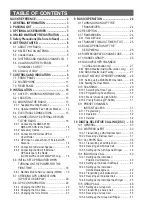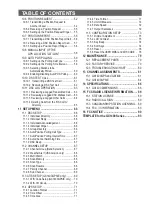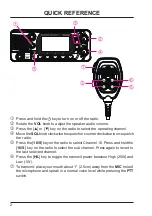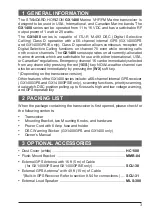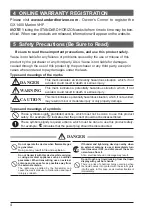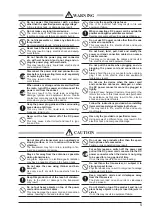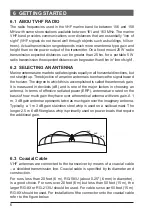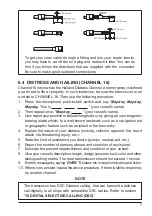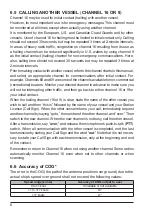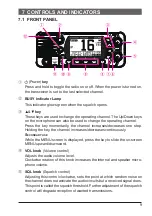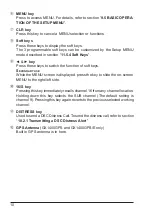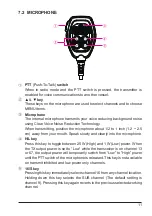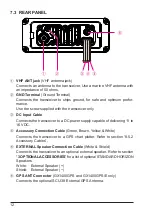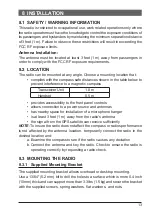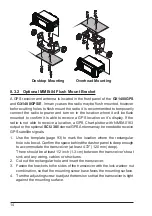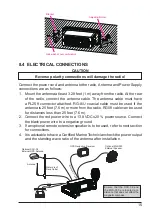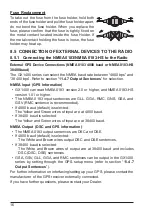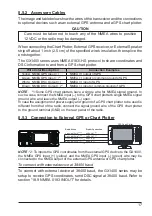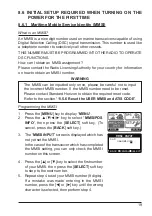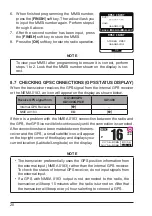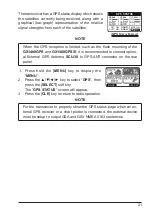
7
To get your coax cable through a fitting and into your boat’s interior,
you may have to cut off the end plug and reattach it later. You can do
this if you follow the directions that are supplied with the connector.
Be sure to make good soldered connections.
6.4 DISTRESS AND HAILING (CHANNEL 16)
Channel 16 is known as the Hail and Distress Channel. An emergency is defined
as a threat to life or property. In such instances, be sure the transceiver is on
and set to CHANNEL 16. Then use the following procedure:
1. Press the microphone push-to-talk switch and say “
Mayday
,
Mayday
,
Mayday
. This is , , ” (your vessel’s name).
2. Then repeat once: “
Mayday
, ” (your vessel’s name).
3. Now report your position in latitude/longitude, or by giving a true or magnetic
bearing (state which) to a well-known landmark such as a navigation aid
or geographic feature such as an island or harbour entry.
4. Explain the nature of your distress (sinking, collision, aground, fire, heart
attack, life-threatening injury, etc.).
5. State the kind of assistance you desire (pumps, medical aid, etc.).
6. Report the number of persons aboard and condition of any injured.
7. Estimate the present seaworthiness and condition of your vessel.
8. Give your vessel’s description: length, design (power or sail), color and other
distinguishing marks. The total transmission should not exceed 1 minute.
9. End the message by saying “
OVER
.” Release the microphone button and listen.
10. If there is no answer, repeat the above procedure. If there is still no response,
try another channel.
NOTE
The transceiver has DSC Distress calling, that can transmit a distress
call digitally to all ships with compatible DSC radios. Refer to section
Summary of Contents for ECLIPSE
Page 96: ......


